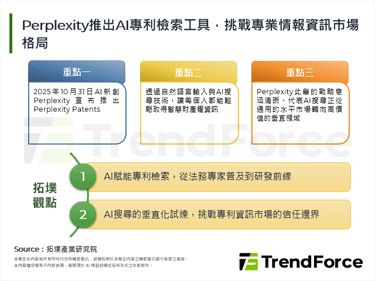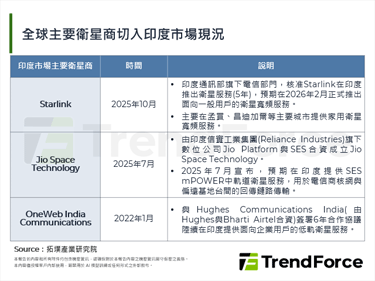DRAM Sector Braces for Makeover
At a time when Taiwan’s DRAM industry is faced with an unprecedented crisis, Industrial Development Bureau of Ministry of Economic Affairs announced on July 20th the makeover plan for DRAM industry, hoping that DRAM players and the TMC being set up will submit in three months’ time the invesmtnet plan, which will then be reviewed fairly by experts.
Mr. C.W. Chen, Chairman of Topology Research Insitute (TRI), points out that of the four elements of a successful industrial makeover, self-innovation and industrial consolidation are most crucial. Whoever can put these two elements to work will beat the odds to win out. TRI is of the view that industrial makeover will trigger such two strategies as “brand new thinking” and “surprise moves,” which should help Taiwanese DRAM companies to be reborn as the controllers of their own fates. If industrial members can come up with more viable plans, TMC will not be revered as the sole option. But if the initiative to integrate is somehow boycotted, Samsung stands to benefit the most.
C.W. Chen further points out that now is the curcial moment when industrial makeover is on the get-go, and international competition will do what within their power to stage the false facade that the spring has returned for the industry, so as to cause Taiwanese DRAM companies to become less in touch with the severity of the situation and let down their arms and fighting spirit when they shouldn’t, in the process sabotaging Taiwan’s grand scheme of reviving the DRAM sector.
Failure to Come to the Rescue of DRAM Sector will Cause Graver Danger
Taiwanese government’s inaction, should they choose this path, when DRAM sector is fighting for its life, will bring onto itself impeachment and harsh critism from the general public.
In fact, if the government had not extended loans and helped out in other manners since the end of last year, the moribund DRAM sector would have infected other sectors. The fact that even TSMC and Hon Hai had to resort to layoffs and payless leaves to ride out the rough patches says a lot about the seriousness of the situation. And at a time like this, throwing up one’s hands and let DRAM sector go bust will be no less than to throw over NT$300bn’s worth of bank claims into the water. It will then be logically followed by banks retracting liqudity, which will ultimately trigger chain reactions and culminate into a devastating storm for Taiwan’s economy.
At a time like this, Taiwan should be united behind the goal of trusting our experts, pooling our capital, setting our national agenda, and rounding up all the widsom, so that we can come up to the challenge of our archirival in the DRAM world, the Korean Samsung.
Reborn to Take Destiny into One’s Own Hand
The bail-out plans Taiwanese DRAM companies first proposed are out of the question for the government as just one company could be asking for finanical injection of up to NT$100bn. If we let those companies have their way, Taiwanese government will be next in line to sink, since there is simply no such money in national coffers.
To get around this dilemma, the Ministry of Economic Affairs thought hard and came up with an industrial makeover plan that requires minimum financial resources (NT$10-30bn) and takes the form of Taiwan Memory Company (TMC), which will then forge stragetic alliance with Japan’s Ministry of Economy, Trade and Industry, in hopes that the the problem can be done away with for good, while setting DRAM sector up for long-term growht once again.
Of the four elements of a successful industrial makeover, organic innovation and industrial consolidation are most crucial. TRI predicts that industrial makeover will trigger such two strategies as “brand new thinking” and “surprise moves.”
For starters, the adoption of “Brand New Thinking” strategy means we should seek in-depth cooperation with international players so as to shed our technological dependence. That is, we shall seek to get hold of our very own next-generation DRAM technology to free ourselves from the straight jacket of NT$20bn per annum in royalties. Without success in this work, Taiwan will forever take orders from foreign peers. Without results in this effort, all the governmental bail-outs in the world will do no good at all.
Secondly, the “Surprise Move” strategy is about avoiding direct engagement with Samsung, catching it off guard, and taking back control of our fate in the industry. We shall not play the unending game of catching up every time Samsung flaunts a cooler gizmo under our nose and especially won’t spend a whopping NT$260bn to fully upgrade to 50nm production process. What Taiwan’s DRAM sectoral chain really needs is optimized structure through consolidation and flexiblity in putting up counterattacks. The key to success is to create diverse niche-based business models to confront Samsung’s mass-volume standardized production model. This will not only help Taiwan part ways with the old rut its DRAM sector has treaded for years but also put Taiwan’s PC system design and shipment prowess to work. Any effort short of the above will only sink Taiwan further into the quagmire it’s in now.
TMC, a Strong but Hardly the Sole Option
TMC is essentially an independent and self-governed private company, as voluntary private-sector investment will much outsize governmental investment capped at NT$10bn. As such, it marks the convergence of private entrepreneurship, governmental planning, and international partnership. On a relatively small capitalization of NT$30bn, TMC will take on Samsung like David takes on Goliath. It’s been given the responsibility of remaking the struggling DRAM industry in Taiwan, a task it has no luxury of failing on.
TMC might be justified for being covert about some of its actual operations, but how exactly it will go about transforming the DRAM sector is still subject to scrutiny by experts. At the end of the day, TMC is only a benchmark for a number of other governmental and private efforts to salvage the local DRAM sector. That is, if Taiwanese DRAM companies can come up with more viable plans, TMC will not be in the way. It’s just a means to a goal. And as soon as DRAM sector is redirected onto the right path, the better; who gets the credit hardly matters.
In the unfortunate event that TMC as a project is derailed, some of the greatest minds in Taiwanese tech realm think that no one will be more thrilled than Samsung; Taiwanese DRAM companies have also been frank when they said “Samsung surely stands to benefit the most from the failure of TMC; Taiwanese survivors of TMC’s woes, if any, will be reduced to a pitifual existence in terms of market share.
The Unsuspecting DRAM Division is in Danger of Dying a Slow Death; the Society Might Have Underestimated the Threat
DRAM’s crisis began when the sweeping global finanical turmoil forced DRAM companies to sell off inventory for cash, causing memory prices to fall through the floor, while Samsung’s manipulation of the market to sqeeze out competition worsened the downward spiral. In 4Q08, 1Gb DRAM spot price tanked to US$0.49 vis-à-vis cash cost of US$1.5; by August 2009, the same product sells for a spot price of US$1.23, against the cash cost of US$1.3. The rise in spot prices might have amounted to 150%, but it’s due to memory capacity reduction and moderate PC demand recovery, not change in DRAM fundamentals.
TRI predicts that as supply continues to increase with demand growth trailing far behind, chances of DRAM price surging are slim, at best. Given the circumstances of current DRAM market, now would be a good time to give up on the hope that the good old days of big bucks can be repeated for DRAM. In fact, as we speak, DRAM companies are still bleeding cash, as Taiwan has yet to find the cure to the situation. What we have now, at the most, is sugar-coated poison.
Being stuck with prices that are neither too good nor too bad means that you can be either slightly in the black or in the red, but you can’t compete with either lower prices (since the price is never too good) or with upgraded technologies (since you never make enough money to give you that privilege). The situation turns you into a frog being cooked in a pot of luckwarm water. You are not aware of the danger until it’s too late. Figures of speech aside, Taiwan’s DRAM industry would be losing grip of its competitiveness and might meet the unthinkable end of total destruction if we don’t act soon and wisely. We must exhaust all means to preempt that end because its negative impact on Taiwan would be far greater than we can imagine or bear.
One Must not Be Hoodwinked by the False Recovery
Taiwan’s DRAM industry is in the thick of the most intimidating challenge that it ever crossed paths with, as the game has been hijacked and rules rewritten by Samsung. Taiwan has no choice but to take whatever deals Samsung dishes out. Last year alone, Taiwan’s DRAM industry sustained losses of over NT$100bn, and is looking at upwards of NT$60bn in loss this year. Individually, Taiwanese DRAM companies are no other than sitting ducks.
Taiwan has invested nearly a trilllion NTD in the DRAM sector, with the entire sectoral chain acting as the livelioold of over 20k professionals. Now as the curcial moment when the success of an industrial makeover is at stake, competitors worldwide will go all out to stage the false façade that the spring has returned for the industry, so as to cause Taiwanese DRAM companies to let down their arms and fighting spirit at the worst time possible, thereby sabotaging Taiwan’s grand scheme of puffing life back into the DRAM sector.






